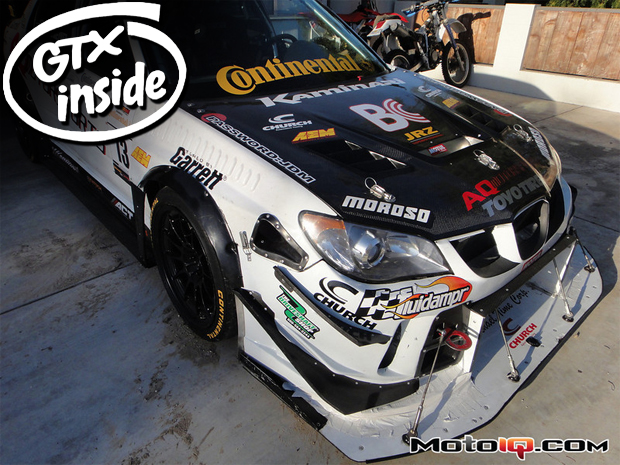 |
AQ Motorsports STI Getting the GTX Upgrade
By Khiem Dinh, photos by JC Meynet
Khiem Dinh is an engineer for Honeywell Turbo Technologies at the time of this writing. All statements and opinions expressed by Khiem Dinh are solely those of Khiem Dinh and not reflective of Honeywell Turbo Technologies.
Heading into this year’s racing season, JC Meynet needed more power than his trusty two year old Garrett GT3582 could provide. What was the answer? A GTX3582 of course! There are a few reasons why the GTX upgrade made a lot of sense, but most importantly it had to deliver on the power. To find out the reasons, keep on reading.
 |
| Here’s the GTX3582 nestled in the engine bay. Notice the heat shielding to keep cooler air fed to the turbo. |
A wise racing man once said, “To finish first, first you must finish.” JC has been beating on this setup for two years now and worked out the kinks. After testing some fabricated exhaust manifolds, he reverted back to the stock cast exhaust manifolds because the other ones cracked. In the two years of pushing the GT3582 to the limit, and beyond actually, it still spins perfectly just like the day it went on. It has proved durable even though no blow off valve was used! The thrust bearing in a journal bearing turbo would be destroyed in short order with no BOV, but the ball bearing cartridge is durable enough to take the abuse. It’s still not recommended to not use a BOV though!
 |
| Check out the NACA duct next to the head light to feed cool air to the intake. JC and the AQ Motorsports boys know that cooler is better. As they would say, it’s hella functional! Check out our article on compressor efficiency because thermo doesn’t lie. |
As some other smart person once said, “Don’t mess with a good thing.” This made the GTX3582 a logical upgrade from a reliability standpoint. The other critical reason was being a drop-in replacement. Why was this so important? JC and the AQ Motorsports team had less than a week to get the car ready before the Modified Tuner Shootout in Phoenix. That left no time to do new manifolds, downpipe, intake, IC piping, oil lines, or water lines. Well, not if anyone wanted to get any sleep. Plus, it’s way cheaper not to do those other things anyways.
So on to the raison d’etre of the GTX, more power in the same package. The first comparison is both turbos at 30psi. The next set of graphs has the turbos in max kill mode. The tuning and dyno plots are courtesy of Shawn Church of Church Automotive.



